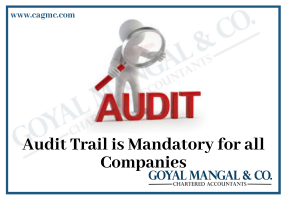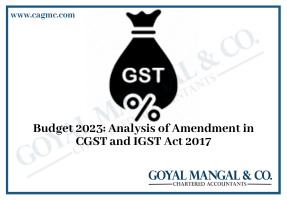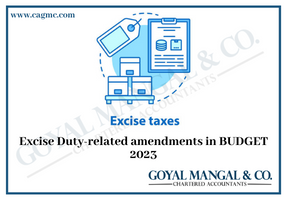
The Ministry of Corporate Affairs (MCA) amended Schedule III of the Companies Act 2013, October 11, 2018. Schedule III of the Companies Act 2013, provides a format for the financial statements of companies complying with Accounting Standards (AS) and Ind AS under Division I and Division II respectively. Schedule III will now apply to the NBFC covered under Ind AS. The MCA has also amended the existing Division I (Indian GAAP) and Division II (Ind AS). This article focuses on the synopsis of amendments in Schedule III of the Companies Act, 2013.
|
Table of content |
Key Abstract
On October 11, 2018, the Ministry of Corporate Affairs (MCA) modified Schedule III of the Companies Act, 2013. Schedule III of the Companies Act 2013, under Division I and Division II, specifies the structure of financial statements for companies adhering to Accounting Standards (AS) and Ind AS. Schedule III will now apply to NBFCs covered under Ind AS. MCA has also revised Division I (Indian GAAP) and Division II (Ind AS).
Changes to Ind AS Schedule III necessitate new disclosures from enterprises submitting Ind AS financial statements. Other notifications concern trade receivables, loans receivables, and trade payables, and they also meet the disclosure requirements of the Micro, Small, and Medium Enterprises Development Act, 2006.
The most notable change is the addition of Division III, which specifies the structure for preparing financial statements for Non-Banking Financial Companies (NBFCs) to which Ind AS applies.
Synopsis of amendments in Schedule III of Companies Act, 2013
In the interest of transparency and disclosure, the Ministry of Corporate Affairs made significant amendments to Schedule III of the Companies Act, 2013, directing the Companies/Statutory Auditors to provide additional details of certain transactions in the Balance Sheet/Profit & Loss Account/Schedules on Balance Sheet/Profit & Loss Account.
These modifications were effective on 01-04-2021, which means that companies/statutory auditors must include these adjustments in their financial accounts for the fiscal year ending 31-03-2022.
Schedule III of Companies Act, 2013
The Ministry of Corporate Affairs uses Notice G.S.R. 207 (E) dated 24 March 2021 have amended Schedule III of the Companies Act, 2013 which will come into effect from 1 April 2021. The notice covers various additional disclosure requirements while preparing the financial statements of an entity compiled under three divisions of Schedule III of the Companies Act, 2013.
- Division I – Guidelines for Companies whose Financial Statements are required to comply with the Companies (Investment Standards) Act, 2006.
- Division II – Guidelines for companies whose financial statements are required to comply with Indian Accounting Standards, 2015.
- Division III – Guidelines for Non-Banking Companies (NBFCs) whose financial statements are required to comply with Indian Accounting Standards, 2015
Most of the amendments to Schedule III of the Companies Act, 2013 have been made as a result of amendments to the recently released Company (Auditors and Report Order) of 2020 and the Amended Rules of Companies (Savings Standards in India), 2020.
Amendments in Schedule III of Companies Act, 2013
Following are the Amendments of Schedule III:
Part I – Amendments to the General Balance Sheet Adjustment Instructions
- The company should include the figures in the financial statements. Terms of termination will now be ‘Total Money’ instead of Turnover. Previously, a collection of companies could be selected from them.
- The balance sheet will also include details of the facilitator’s share held at the end of the year and changes, if any, during the year.
- “Current maturity of long-term loans” will be disclosed separately under the heading of short-term loans.
- The ageing schedule in respect of commercial payments will be given for a period of less than one year, 1-2 years, 2-3 years, and more than 3 years in respect of:
- Small and Medium Enterprises (MSME);
- Others;
- Dispute Payments – MSMEs; and
- Claims
The same information will be provided if no payment date has been set, in which case the disclosure will be made from the date of the transaction. Unpaid payments will be disclosed separately.
- The ageing schedule for Trade Revenue will be provided for less than 6 months, 6 months – 1 year, 1-2 years, 2-3 years and over 3 years in this regard:
- Undisputed Trade Receivables – Considered Good
- Undisputed Trade Receivables – Considered to be questionable
- Disputed Trade Receivables – Considered Good
- Disputed Trade Receivables – Considered doubtful
The same information will be provided if no payment date has been set, in which case the disclosure will be made from the date of the transaction. Unpaid payments will be disclosed separately.
- The term “Intangible Goods” has been replaced by “Property, Plant and Equipment” and the term “Intangible Property” is substituted for the terms “Property, Plant and Equipment”.
- Under the heading Intangible Assets and Intangible Assets, a reconciliation statement will be provided with the total and net amount of asset management for each category at the beginning and end of the reporting period indicating surplus, disposals, acquisition, review, and variance.
- Collateral Deposit will not be disclosed under “Long-Term Loans and Development” but will be disclosed under “Other Non-Current Assets”
- Businesses in addition to the above are required to provide details of any conflicts of interest in the use of a particular loan portfolio.
Part II – Additional Reporting Requirement in respect of Regulatory Disclosures
For companies complying with Ind AS, a few amendments have been made. The following are the amendments submitted to Ind AS compliant companies regarding the preparation and presentation of their financial statements:
- Trade Payables under the heading “Equity and Liabilities” will disclose payments made to small and medium enterprises other than small and medium enterprises on the face of the balance sheet.
- ‘Equity’ – A description of each area listed under the heading ‘Equity’ on the Balance sheet should be provided in the notes to the financial statements. The description may include the purpose of each designated area, the reason for the movement of the palaces during the year, etc.
- Non-Current Receivables and Current Receivables shall also be classified as:
- Trade Receivables considered goods– Safe
- Trade receivables are considered goods – Unsafe.
- Trade Receipts with a significant increase in Credit Risk.
- Trade receivables – Debt Damaged.
The pre-classification of non-current and current trade receivables was as follows:
- Protected, considered good
- Unsecured is considered good
- Doubt
Non-current and current loans will also be included in the following categories:
- Loans Receivables considered good – Secure.
- Loans receivables are considered goods – Not Secure.
- Loan receivables with a significant increase in credit risk.
- Loan Receivables – Debt Damaged.
The pre-classification of non-current and current trade receivables was as follows:
- Protected, considered good
- Unsafe, considered good
- Doubt
Part III – Amendments corresponding to General instructions for the preparation of Statement of Profit and Loss and Additional Information
- The company will be required to provide details of transactions that are not recorded in the records but which are provided or disclosed as revenue during the year in the tax audit.
- That the company is subject to Section 135 of the Companies Act, 2013 concerning Corporate Social Responsibility (CSR) so, if the entity is required to provide certain disclosures as part of its financial statements.
- In that case, if the entity is involved in trading or investing in Crypto-Currency and Virtual Currency during the financial year, disclosures relating to the profit and loss in trading and the amount of money held at the reporting date will be given to the Accounts.
Conclusion
In summarizing our discussion, all the changes made in Schedule III are intended to increase the visibility and reliability of users of financial statements, which is important because, as we see in modern times, investor confidence in financial statements will decrease due to increased fraud and irregularities.







